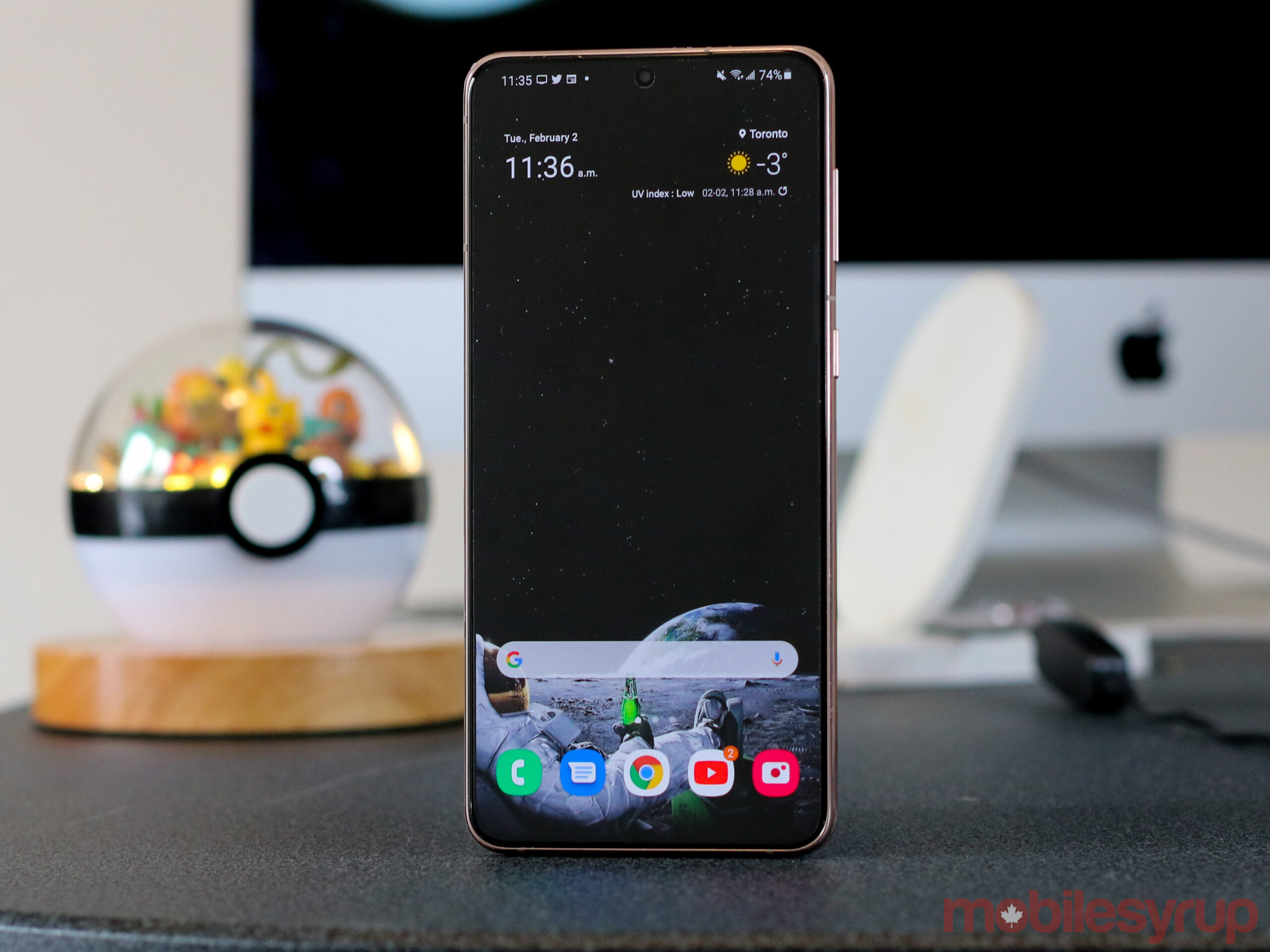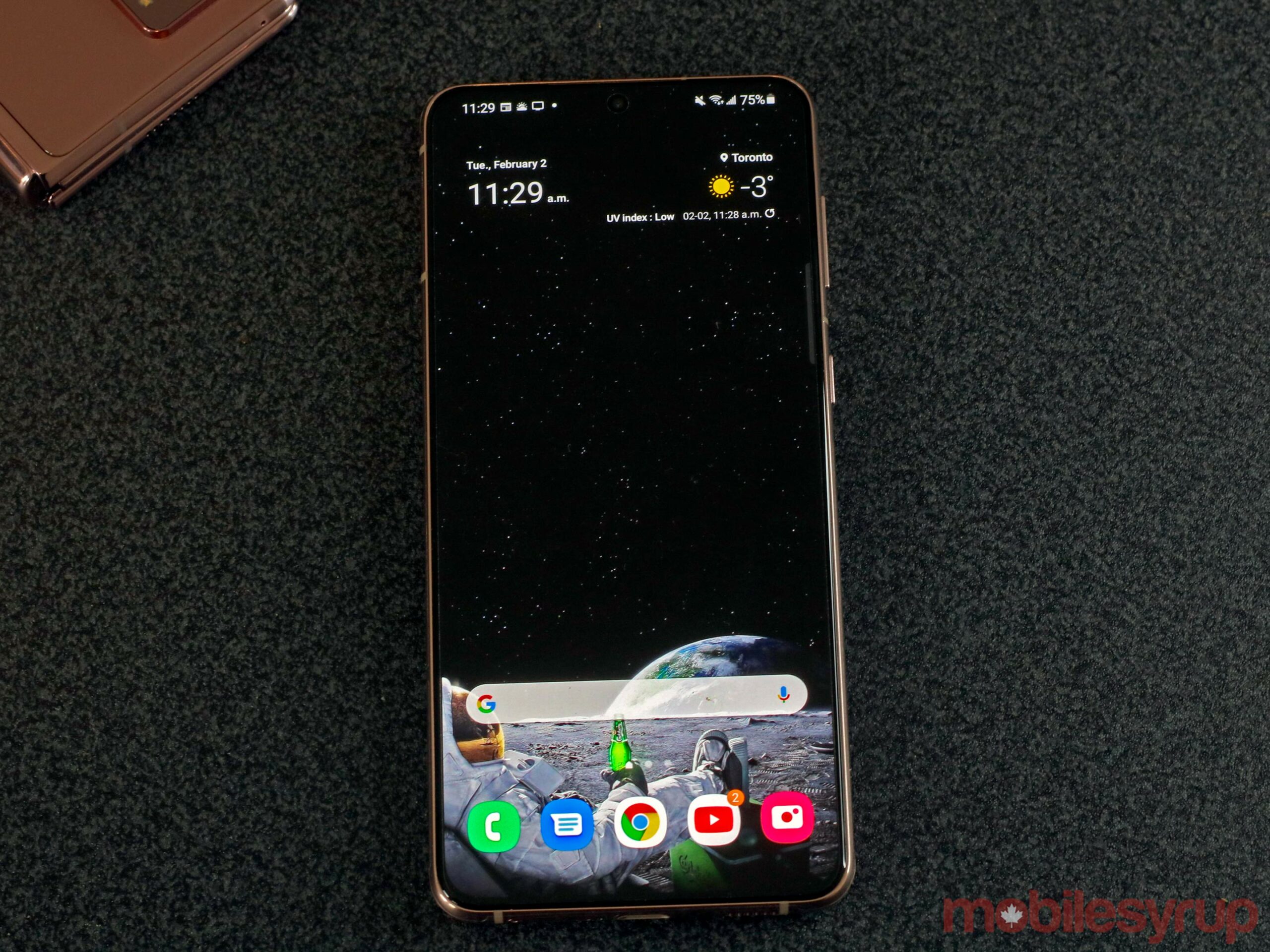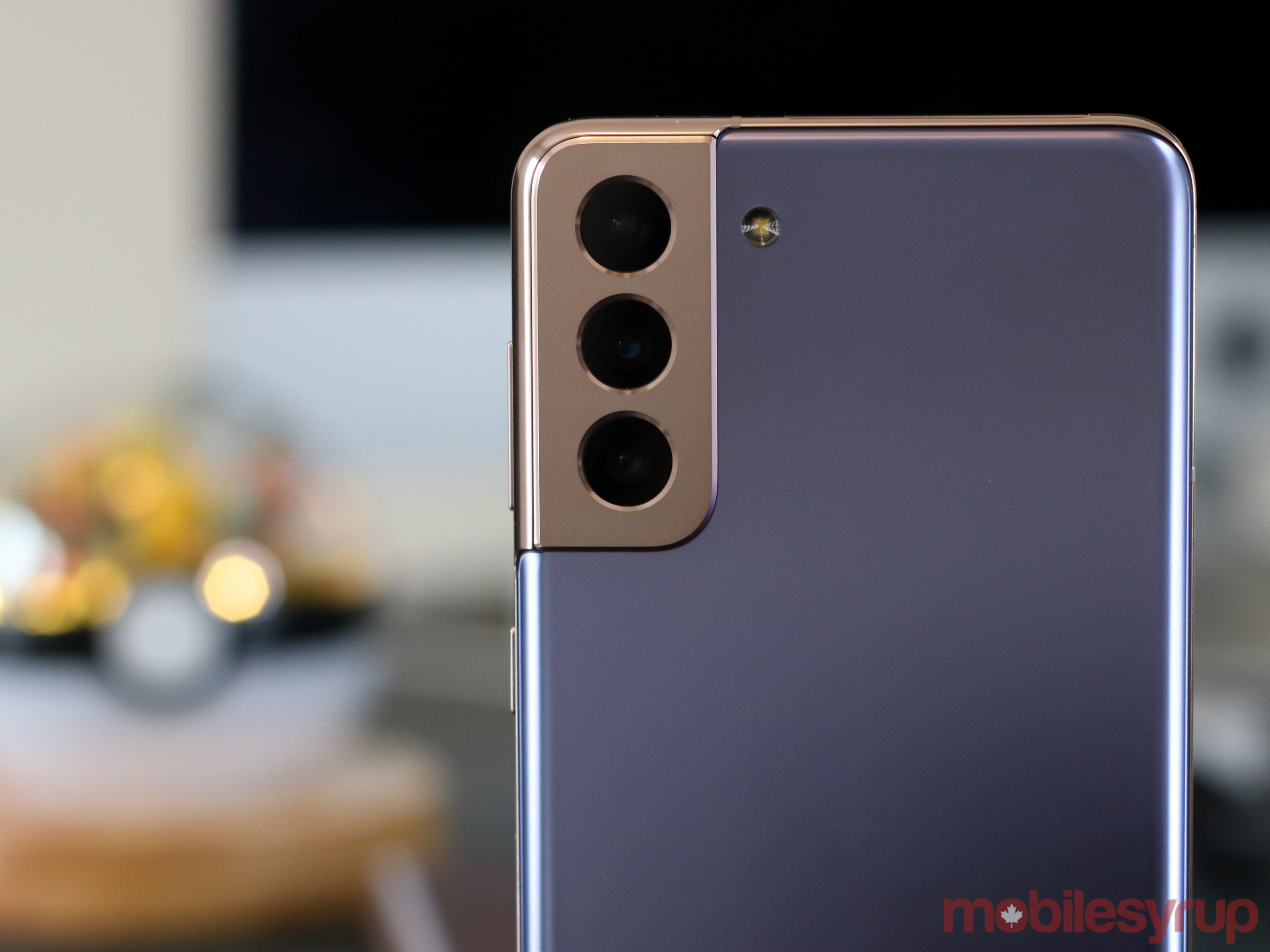
The Pros
- Very nice design
- Snappy and quick
- Big battery
The Cons
- Expensive
- Lower resolution display compared to its predecessor
- Camera isn't at the level of other flagships
In the past two years, Samsung has repeatedly launched some of my favourite handsets, including the S10+, S20+ and Z Fold 2. Both S series handsets were phenomenal and perfect examples of what a flagship smartphone is.
The S10+ and S20+ offered top-of-the-line specs, including admirable cameras, a big battery, a quick processor, beautiful designs, and great displays. Last year, I said that “for the rest of the year, I’ll be comparing other premium phones to this device and see how they stack up. Good luck to them, though, as the S20+ will be hard to beat.”
In 2021, however, Samsung seems to have placed most of its attention on the Galaxy S21 Ultra, leaving the Galaxy S21+ and S21 in the dust.
This year, I can say with certainty that the Galaxy S21+ isn’t among my favourite smartphones of the year and it shouldn’t be the example other manufacturers strive to beat.
While the device offers long-lasting battery life, a cool design and the snappiest processor available, it lags behind the S21 Ultra in several areas.
Specs
Samsung Galaxy S21
Samsung Galaxy S21+
Samsung Galaxy S21 Ultra
Display
6.2-inch Flat Dynamic AMOLED, 1,080 x 2,400 pixels, 20:9 aspect ratio, 120Hz display, HDR10+
6.7-inch Flat Dynamic AMOLED, 1,080 x 2,400 pixels, 20:9 aspect ratio, 120Hz display, HDR10+
6.8-inch Curved Dynamic AMOLED, 1,440 x 3,200 pixels, 20:9 aspect ratio, 120Hz display, HDR10+
Processor
Snapdragon 888
Snapdragon 888
Snapdragon 888
RAM
8GB of RAM
8GB of RAM
12GB of RAM, 16GB of RAM
Storage
128GB, 256GB
128GB, 256GB
128GB, 256GB, 512GB
Dimensions (in.)
151.7 x 71.2 x 7.9mm
161.5 x 75.6 x 7.8mm
165.1 x 75.6 x 8.9mm
Weight
172g
202g
228g
Rear Facing Camera
12-megapixel (f/1.8, wide) + 64-megapixel (f/2.0, 3x zoom) + 12-megapixel (f/2.2, 120-degree FOV, ultrawide)
12-megapixel (f/1.8, wide) + 64-megapixel (f/2.0, 3x zoom) + 12-megapixel (f/2.2, 120-degree FOV, ultrawide)
108-megapixel (f/1.8, OIS wide) + 10-megapixel (f/4.9, 10x zoom, OIS), 10-megapixel (f/2.4, 3x zoom, OIS)+ 12-megapixel (f/2.2, 120-degree FOV, ultrawide)
Front Facing Camera
10-megapixel (f/2.2)
10-megapixel (f/2.2)
40-megapixel (f/2.2)
OS
Android 11, One UI 3.1
Android 11, One UI 3.1
Android 11, One UI 3.1
Battery
4,000mAh
4,800mAh
5,000mAh
Network Connectivity
GSM/HSPA/LTE/5G
GSM/HSPA/LTE/5G
GSM/HSPA/LTE/5G
Sensors
Fingerprint (in-display), accelerometor, gyro, proximity, compass
Fingerprint (in-display), accelerometor, gyro, proximity, compass
Fingerprint (in-display), accelerometor, gyro, proximity, compass
SIM Type
Nano SIM
Nano SIM
Nano SIM
Launch Date
January 14, 2021
January 14, 2021
January 14, 2021
Misc
Colours: Phantom Gray, Phantom White, Phantom Pink, Phantom Violet
Colours: Phantom Silver, Phantom Black, Phantom Violet, ultra wideband
Colours: Phantom Silver, Phantom Black, 120Hz @ WQHD+, S Pen compatibility, ultra wideband
Display
Samsung Galaxy S21
6.2-inch Flat Dynamic AMOLED, 1,080 x 2,400 pixels, 20:9 aspect ratio, 120Hz display, HDR10+
Samsung Galaxy S21+
6.7-inch Flat Dynamic AMOLED, 1,080 x 2,400 pixels, 20:9 aspect ratio, 120Hz display, HDR10+
Samsung Galaxy S21 Ultra
6.8-inch Curved Dynamic AMOLED, 1,440 x 3,200 pixels, 20:9 aspect ratio, 120Hz display, HDR10+
Processor
Samsung Galaxy S21
Snapdragon 888
Samsung Galaxy S21+
Snapdragon 888
Samsung Galaxy S21 Ultra
Snapdragon 888
RAM
Samsung Galaxy S21
8GB of RAM
Samsung Galaxy S21+
8GB of RAM
Samsung Galaxy S21 Ultra
12GB of RAM, 16GB of RAM
Storage
Samsung Galaxy S21
128GB, 256GB
Samsung Galaxy S21+
128GB, 256GB
Samsung Galaxy S21 Ultra
128GB, 256GB, 512GB
Dimensions (in.)
Samsung Galaxy S21
151.7 x 71.2 x 7.9mm
Samsung Galaxy S21+
161.5 x 75.6 x 7.8mm
Samsung Galaxy S21 Ultra
165.1 x 75.6 x 8.9mm
Weight
Samsung Galaxy S21
172g
Samsung Galaxy S21+
202g
Samsung Galaxy S21 Ultra
228g
Rear Facing Camera
Samsung Galaxy S21
12-megapixel (f/1.8, wide) + 64-megapixel (f/2.0, 3x zoom) + 12-megapixel (f/2.2, 120-degree FOV, ultrawide)
Samsung Galaxy S21+
12-megapixel (f/1.8, wide) + 64-megapixel (f/2.0, 3x zoom) + 12-megapixel (f/2.2, 120-degree FOV, ultrawide)
Samsung Galaxy S21 Ultra
108-megapixel (f/1.8, OIS wide) + 10-megapixel (f/4.9, 10x zoom, OIS), 10-megapixel (f/2.4, 3x zoom, OIS)+ 12-megapixel (f/2.2, 120-degree FOV, ultrawide)
Front Facing Camera
Samsung Galaxy S21
10-megapixel (f/2.2)
Samsung Galaxy S21+
10-megapixel (f/2.2)
Samsung Galaxy S21 Ultra
40-megapixel (f/2.2)
OS
Samsung Galaxy S21
Android 11, One UI 3.1
Samsung Galaxy S21+
Android 11, One UI 3.1
Samsung Galaxy S21 Ultra
Android 11, One UI 3.1
Battery
Samsung Galaxy S21
4,000mAh
Samsung Galaxy S21+
4,800mAh
Samsung Galaxy S21 Ultra
5,000mAh
Network Connectivity
Samsung Galaxy S21
GSM/HSPA/LTE/5G
Samsung Galaxy S21+
GSM/HSPA/LTE/5G
Samsung Galaxy S21 Ultra
GSM/HSPA/LTE/5G
Sensors
Samsung Galaxy S21
Fingerprint (in-display), accelerometor, gyro, proximity, compass
Samsung Galaxy S21+
Fingerprint (in-display), accelerometor, gyro, proximity, compass
Samsung Galaxy S21 Ultra
Fingerprint (in-display), accelerometor, gyro, proximity, compass
SIM Type
Samsung Galaxy S21
Nano SIM
Samsung Galaxy S21+
Nano SIM
Samsung Galaxy S21 Ultra
Nano SIM
Launch Date
Samsung Galaxy S21
January 14, 2021
Samsung Galaxy S21+
January 14, 2021
Samsung Galaxy S21 Ultra
January 14, 2021
Misc
Samsung Galaxy S21
Colours: Phantom Gray, Phantom White, Phantom Pink, Phantom Violet
Samsung Galaxy S21+
Colours: Phantom Silver, Phantom Black, Phantom Violet, ultra wideband
Samsung Galaxy S21 Ultra
Colours: Phantom Silver, Phantom Black, 120Hz @ WQHD+, S Pen compatibility, ultra wideband
Stylish in violet

The S21+’s design is where the smartphone shines. It offers the now-familiar ‘Infinity-O’ display with a tiny selfie shooter and very slim bezels. Unfortunately, this time the panel is completely flat. While some really enjoy smartphones with a flat-screen, I think the curve actually feels better in hand and helps the viewing experience feel more immersive.
Speaking about the phone’s display, Samsung’s S21+ features a 1080 x 2400 pixel resolution, which is somewhat ridiculous when you look back at the S series line. For the last two years in a row, Samsung’s S series flagship models have featured WQHD+ displays, so it’s an odd move on the company’s part to lower the resolution with the S21+. While images and videos still look good on the S21+, there’s noticeably less sharpness when you hold the device beside the S20+. Some users who have never used a phone with a higher resolution might not take issue with this change; those looking to upgrade from the S10+ and S20+ will notice the difference.
Thankfully, the screen still features a higher 120Hz refresh rate, which makes scrolling and playing games a much smoother experience.

I’m currently using the ‘Phantom Violet’ variant of the handset. When you flip the phone on its side, you’ll notice a bronze frame that offers a nice contrast and flows nicely into the ‘contour cut camera.’ The camera cutout wraps around the S21+ and seamlessly blends into the left corner of the device. This is a nice touch and gives the device a signature look that helps it stand out in an industry full of similar-looking smartphones.
The Phantom Violet also shines nicely in the light, creating different shades of violet depending on how the sun hits it. Additionally, the device comes in ‘Phantom Black’ and ‘Phantom Silver,’ as well as ‘Phantom Red’ and ‘Phantom Gold’ if you purchase it directly from Samsung.
“Overall, the design of the S21+ is a step above the S20+, but in terms of the display quality, the South Korean company took a step back”
The rear of the device has a nice matte feel to it that was first featured with the Galaxy Note 20 Ultra. Thankfully, the back of S21+ is actually glass, unlike the S21. Some might prefer a plastic rear, but a phone this expensive should offer the highest quality possible.
Overall, the design of the S21+ is a step above the S20+, but in terms of the display quality, the South Korean company took a step back.
The Snapdragon 888 is a monster

A smartphone’s display and design aren’t all that matters. In Canada, Samsung’s Galaxy S21+ offers Qualcomm’s highest-end processor, the Snapdragon 888. It’s speedy and handles everything I put it through with ease. This includes browsing the internet, texting, scrolling through Instagram and Facebook, taking pictures, watching videos on YouTube and occasionally playing games like PUBG.
Benchmark-wise, the S21+ performs exceptionally well. With the Snapdragon 888, the handset’s multi-core score hits 3,244, and its single-core score comes in at 1,065. To put this into perspective, the S20+, with its Snapdragon 865 processor, achieves a single-core score of 889 and a multi-core score of 2,927. I don’t put much stock into benchmarks because phones with a lot lower scores, like the Pixel 5 for example, still run great. That said, a high benchmark score definitely can’t hurt a device’s performance.
Unfortunately, the S21+ only has 8GB of RAM this time around for some reason. Last year’s S20+ models all featured 12GB of RAM, but the lower amount of RAM isn’t a big issue. However, the phone does keep fewer apps open at once within its overview menu. While nearly all apps open incredibly quickly due to the S21+’s 888 processor, it’s a weird move on Samsung’s part to lower the device’s amount of RAM. This is yet another example of how the S21+ is a step back from the S20+.

The lower resolution display, the fewer number of apps running in the background and the increase in power cell size give the S21+ pretty good battery life. I’ve gotten a full day of battery out of the phone, with me spending roughly an hour on Instagram and the device running Spotify in the background for eight hours, coupled with an hour spent typing in Google Docs. Other times, I’ve gotten a little less than six hours of screen on time after scrolling through Instagram and Facebook and watching a few YouTube videos.
The S21+ definitely doesn’t offer the best battery life on the market. Still, with how I regularly use the device, I can typically count on it to survive for a whole day, with some juice leftover until the following afternoon.
Unfortunately, Samsung pulled an ‘Apple’ and removed the charger in the box of the S21 series, which I’m not a fan of. When you’re spending so much money on a smartphone, it needs to come with essentials like a charging port.
The S21+ features dual speakers on the top and bottom of the device, allowing it to provide booming sound. It can’t replace an actual external Bluetooth speaker, but they’re fine for listening to music with occasionally. It’s definitely good enough to provide background music when you’re hanging out with friends or roommates.
Using a Sound Meter app, I determined the S21+’s speakers are louder than the Pixel 5 and typically peaked around 68 to 70 decibels.
Average Samsung cameras

The camera in the S21+ is exactly what I expected from a modern flagship Samsung smartphone. The colours pop, and the pictures are extremely vibrant. I particularly like how the S21+’s camera brings life to photos with impressive high dynamic range.
Whether you’re using the 12-megapixel ultrawide, 64-megapixel telephoto or 12-megapixel primary lens, you can expect the S21+ to shoot high-quality images that aren’t necessarily true-to-life. The cameras on the S21 are the same as the S21+, so you’ll find a similar experience there as well.
Telephoto-wise, the shots look good at 3x zoom, but image quality deteriorates the further you push it. Pictures at 30x zoom are horrendous, lack detail and are grainy, similar to the S21 Ultra 100x zoom. That said, pushing the camera to 10x hybrid zoom yields surprisingly decent results.
Night Mode with the S21+ is what I’d describe as fine. Images are bright and in clear focus. Further, with some light, pictures are clear, detailed and look great. However, under little to no light, pictures suffer in quality. What’s interesting is the differences between the S21+ and S20+. With zero to no light, the S20+ boosts the lighting, making it almost look like it’s daylight, whereas the S21+ keeps the image darker with more contrast. Night mode with the ultra-wide-angle camera is worse than with the primary shooter, with images losing detail and appearing very noisy.
The S21+’s selfie camera is decent at best. The pictures are fine, but just like every Samsung smartphone, the front-facing shooter overexposes my skin. It also loses the detail in my facial hair, which ends up looking like a blurry mess.

Good, but there are better options
In the end, the S21+ is a decent smartphone. It offers a lower resolution screen and less RAM than the S20+, but it’s more powerful and features an improved design. It’s definitely not as impressive as the S20+ and is a step backward from its predecessor in some ways, including most notably, display resolution.
One of the S21+’s main issues is that it costs $1,399.99, while the S21 Ultra costs $1649.99. If I was in the market for a new handset, I would spend the extra $250 for the S21 Ultra, which offers a better camera, a higher display resolution, a curved screen and more RAM. I’d even consider waiting for the S20+ to go on sale (currently the device is $1,349.99 making it only $50 less than the S21+).
It’s not that you’re going to have a bad experience with the S21+, it’s just that there are better smartphone options currently available for less money. If you want the best, go for the S21 Ultra, and if you want to save some cash, wait for S20+ to go on sale -- and finally, if you really want to save some money, purchase the nearly as good and far cheaper Pixel 5.
You can also read our full reviews of the Galaxy S21 and the S21 Ultra.
"In the end, the S21+ is a decent smartphone"
MobileSyrup may earn a commission from purchases made via our links, which helps fund the journalism we provide free on our website. These links do not influence our editorial content. Support us here.
























